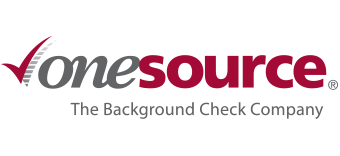Understanding & Simplifying Adverse Action
Background checks are part of every employer’s routine, from candidate screening to rescreens on employees, and along with these checks come important discoveries, too. Unfortunately, some of these discoveries call for adverse action, meaning an employment-related action that adversely or unfavorably affects a prospective or current employee. This blog covers some of the general steps employers should understand before they take adverse action on a candidate or employee.
Adverse Action Process
The adverse action process includes a series of letters informing a candidate or employee of their rights after they authorized procurement of a background report on them but before an employment decision has been made based on its content. In general, the first letter notifies the candidate or employee that an employment decision may be forthcoming based on the content of a background report; attached to this letter is a copy of the background report and a Summary of Your Rights under the Fair Credit Reporting Act (“FCRA”). The employer then waits for a set period of time to permit the candidate or employee to respond to the employer or dispute the accuracy of the background report with the consumer reporting agency, before final notice is sent is provided.
When taking adverse action on a candidate or employee, employers must comply with applicable laws including the FCRA and other state and local laws such as ban-the-box and fair chance laws. An employer who fails to comply with these laws could be held liable for actual damages, punitive damages, and other costs and fees.
The Benefits of Automation
All these steps can be a challenge to tackle alone or even with a robust team. Not only does it take time and energy to put the correct materials together and send them at the proper intervals, but whenever a team member carries these out, there’s a risk of human error. That’s why many turn to automated services to handle tasks like these. Deel, an HR platform provider, notes that automating tedious manual HR processes can make a big impact in several ways. Here are just a few:
- Guaranteed compliance. Automated document management and scheduled communications mean everything you need to keep compliant is done for you.
- Fewer manual errors. Decrease the likelihood of costly liability claims and enhance efficiency with human error out of the equation.
- Improved consistency. Provide a consistent experience for applicants and employees across the board.
Like all highly regulated employment practices, it’s best to review your policies and procedures with your organization’s legal counsel. Ensuring that the language is clear to applicants and employees is a great place to start, but employers also need to have a strategy in place if adverse action is required.
Free up time and reduce stress by handling adverse action through automation. Learn more about One Source’s One-Click Adverse Action service >>
Disclaimer: This post is for informational purposes only and does not constitute professional advice. Always consult with legal counsel for personalized guidance.











